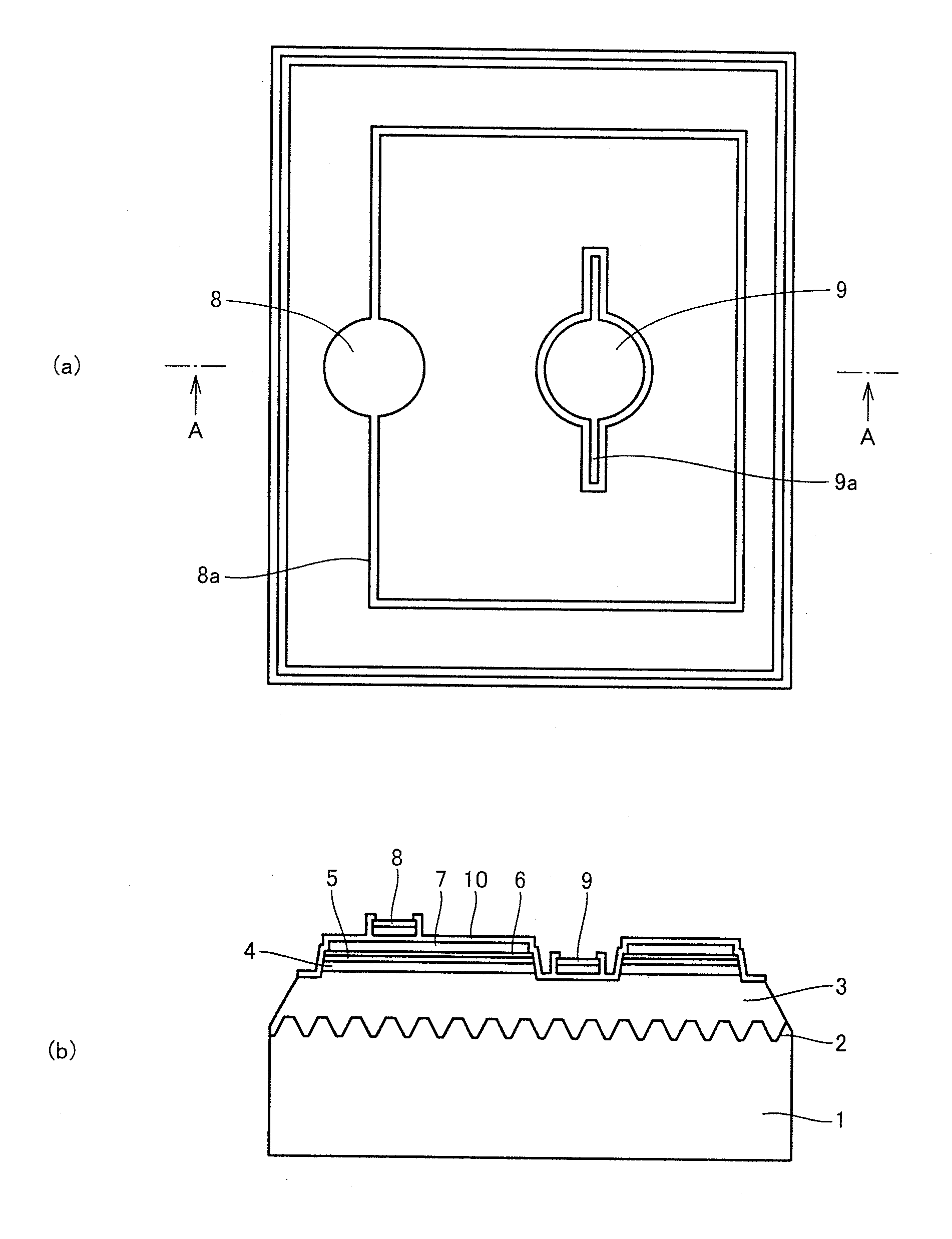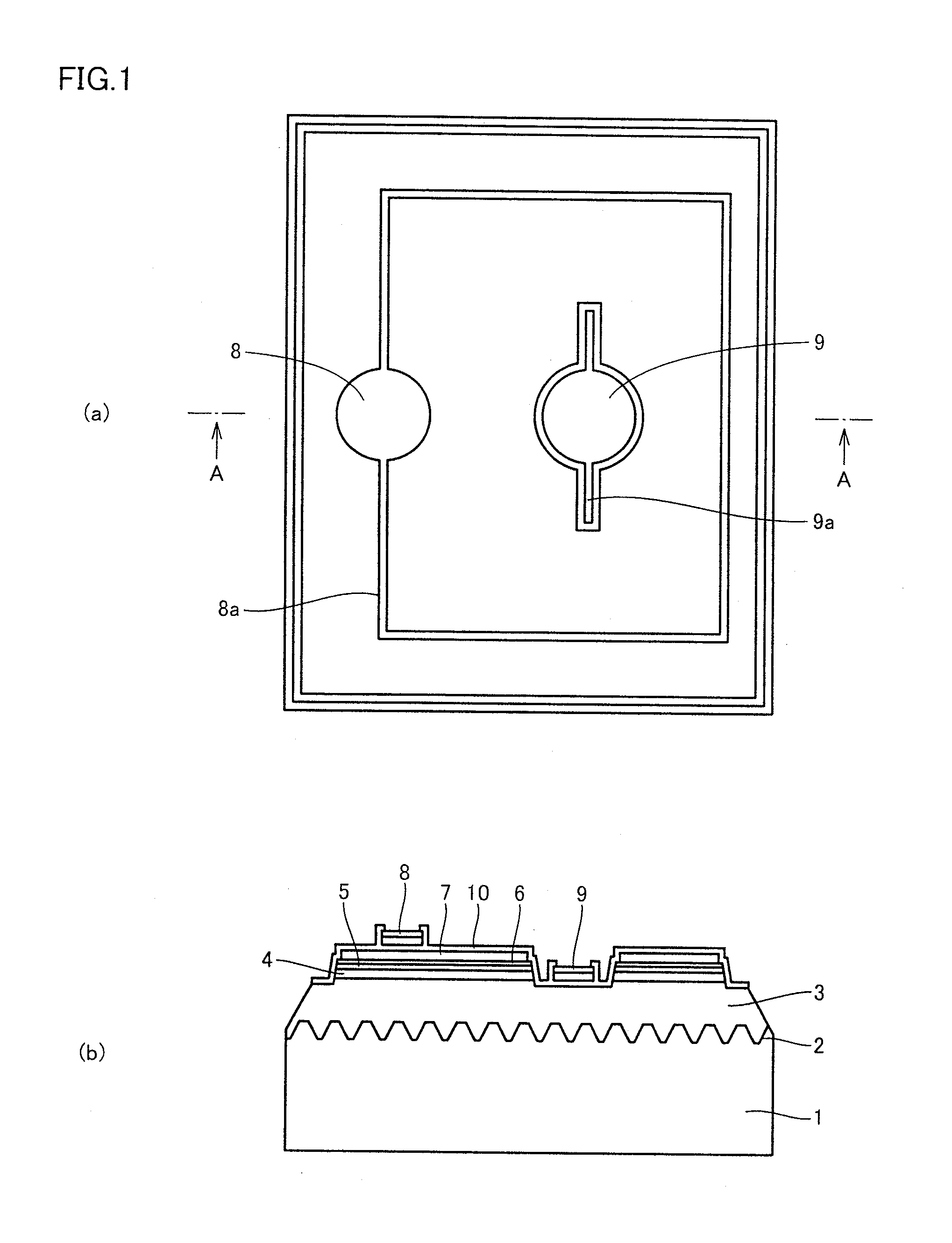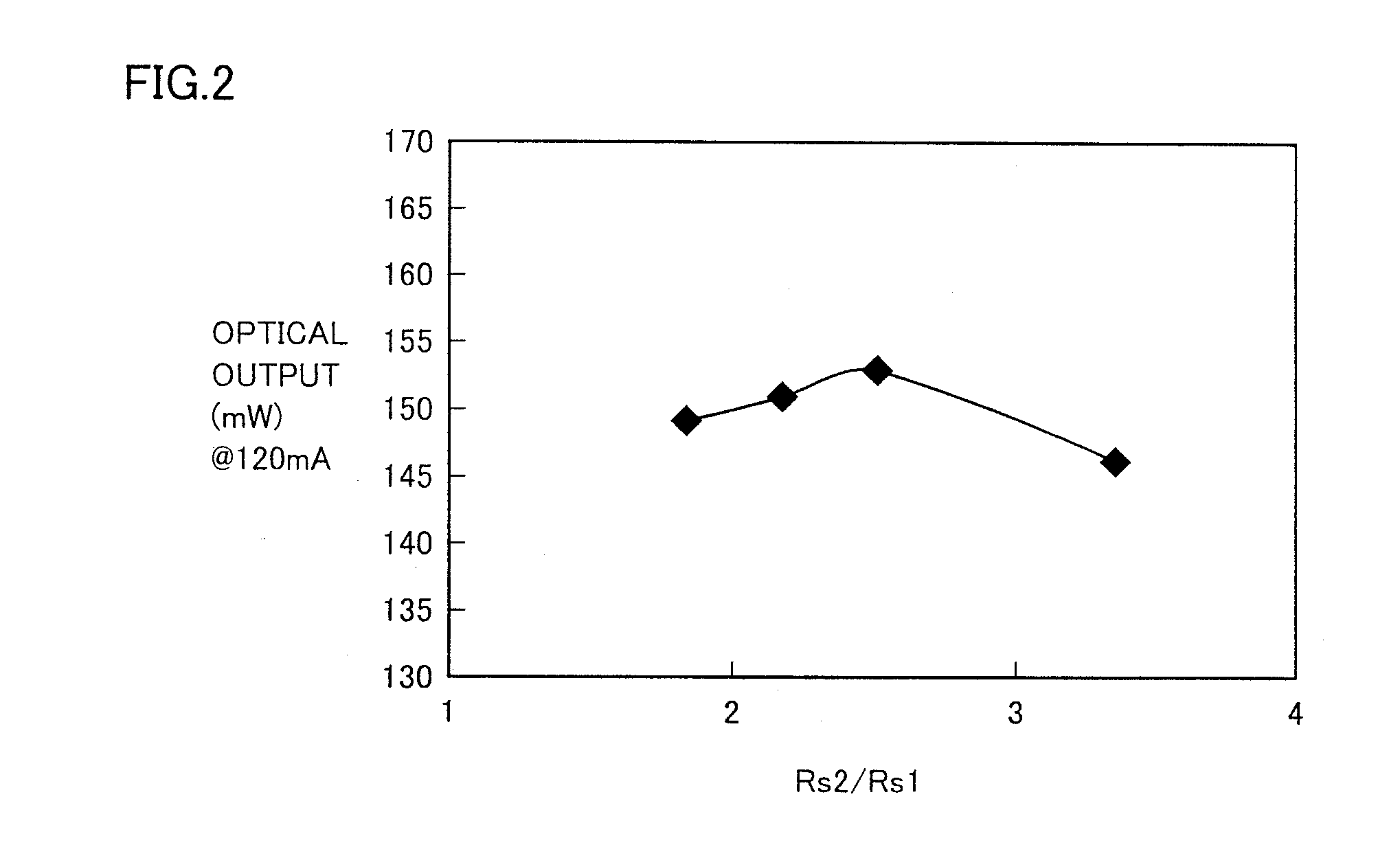Nitride semiconductor light-emitting device and production method thereof
- Summary
- Abstract
- Description
- Claims
- Application Information
AI Technical Summary
Benefits of technology
Problems solved by technology
Method used
Image
Examples
embodiment 1
[0081]In a method of producing a nitride semiconductor light-emitting device according to Embodiment 1, an n-type nitride semiconductor layer 3 is deposited on a substrate 1 of sapphire having a main surface of a (0001) plane orientation for example with a buffer layer 2 of AlN intervening therebetween, as shown in FIG. 1(b). This n-type nitride semiconductor layer 3 includes a GaN underlayer of 9 μm thickness and an Si-doped n-type GaN contact layer (carrier concentration: about 6×1018 cm−3) deposited at a substrate temperature of about 1000° C. and has sheet resistance Rs1 of about 6-8 Ω / □.
[0082]An active layer 4 is deposited on n-type nitride semiconductor layer 3. This active layer 4 has a multiple-quantum-well structure in which n-type In0.15Ga0.85N quantum well layers each having a thickness of 3.5 nm and Si-doped GaN barrier layers each having a thickness of 6 nm are deposited six times repeatedly at a substrate temperature of about 890° C., for example.
[0083]On active layer ...
embodiment 2
[0090]In a method of producing a nitride semiconductor light-emitting device according to Embodiment 2 of the present invention, the second annealing after deposition of the ITO current diffusion layer is conducted in the vacuum atmosphere for 5 minutes at a temperature of 430° C. decreased as compared with Embodiment 1. As a result, sheet resistance Rs2 is increased to 13Ω / □, while contact resistance Rc between the ITO current diffusion layer and the p-type contact layer of p-type GaN is decreased to 0.04 Ω·cm2. It is considered that sheet resistance Rs2 is increased as compared with Embodiment 1 because the crystallinity of the current diffusion layer is lowered. In the meantime, it is considered that contact resistance Rc between the current diffusion layer and the p-type contact layer of p-type GaN is decreased as compared with Embodiment 1 because the height of the Schottky barrier is lowered.
[0091]Further, the optical output at 120 mA in Embodiment 2 is increased as compared w...
embodiment 3
[0093]In a method of producing a nitride semiconductor light-emitting device according to Embodiment 3 of the present invention, the second annealing after deposition of the ITO current diffusion layer is conducted in the vacuum atmosphere for minutes at an annealing temperature of 410° C. further decreased as compared with Embodiments 1 and 2. As a result, sheet resistance Rs2 is increased to 15Ω / □, while contact resistance Rc between the ITO current diffusion layer and the p-type contact layer of p-type GaN is decreased to 0.03 Ω·cm2. Further, the optical output at 120 mA in this Embodiment 3 is increased to the highest and therefore it is understood that the second annealing temperature is most optimized.
PUM
 Login to View More
Login to View More Abstract
Description
Claims
Application Information
 Login to View More
Login to View More - R&D
- Intellectual Property
- Life Sciences
- Materials
- Tech Scout
- Unparalleled Data Quality
- Higher Quality Content
- 60% Fewer Hallucinations
Browse by: Latest US Patents, China's latest patents, Technical Efficacy Thesaurus, Application Domain, Technology Topic, Popular Technical Reports.
© 2025 PatSnap. All rights reserved.Legal|Privacy policy|Modern Slavery Act Transparency Statement|Sitemap|About US| Contact US: help@patsnap.com



